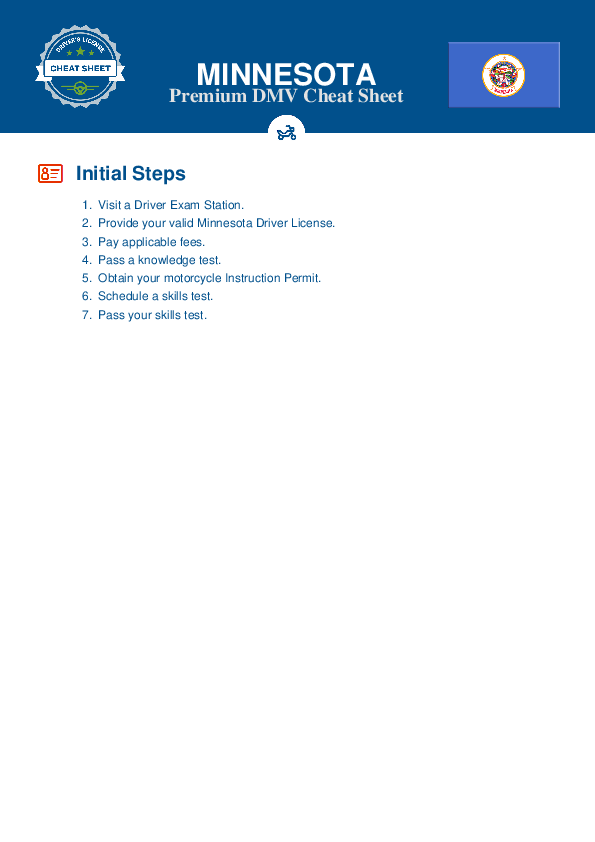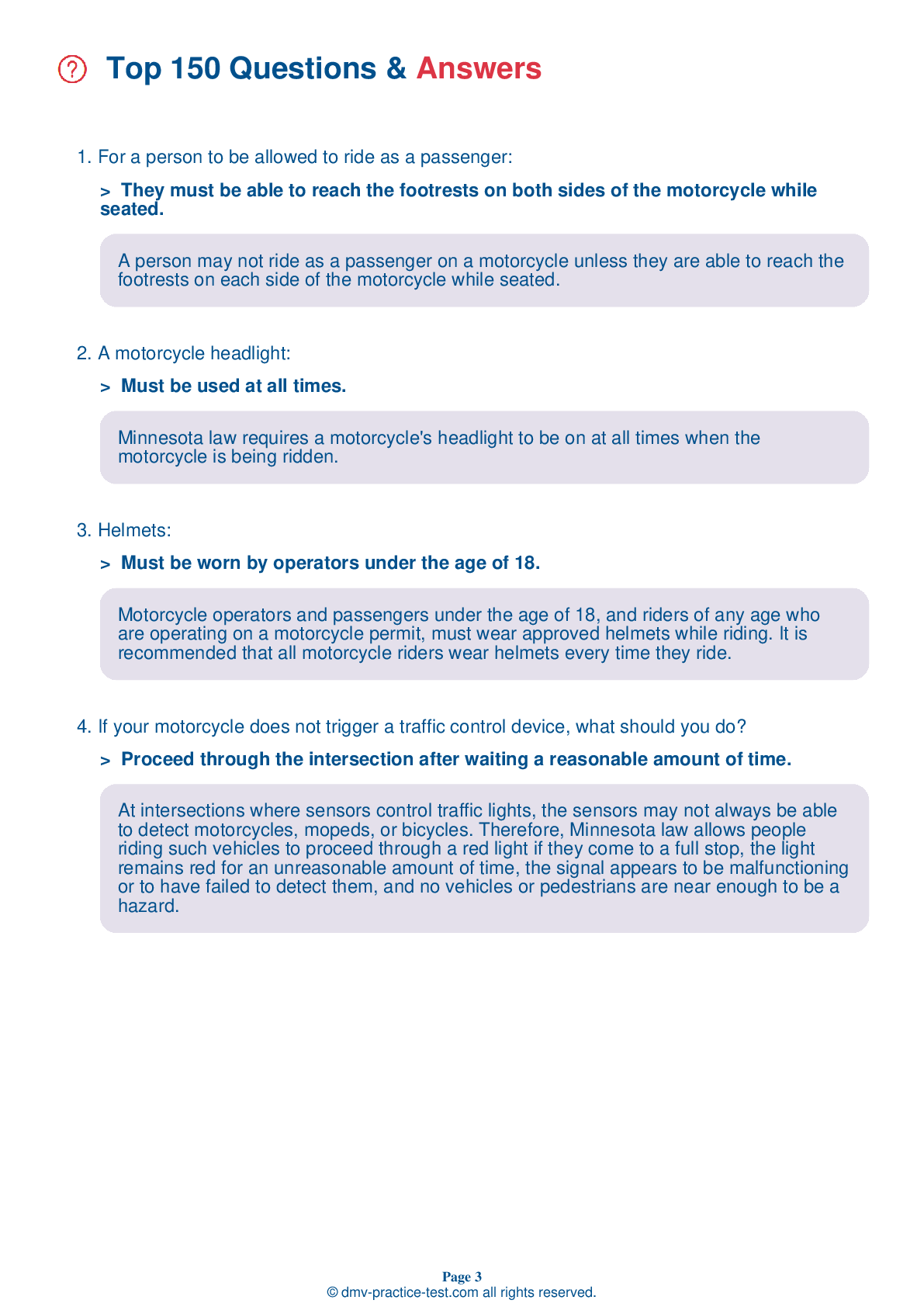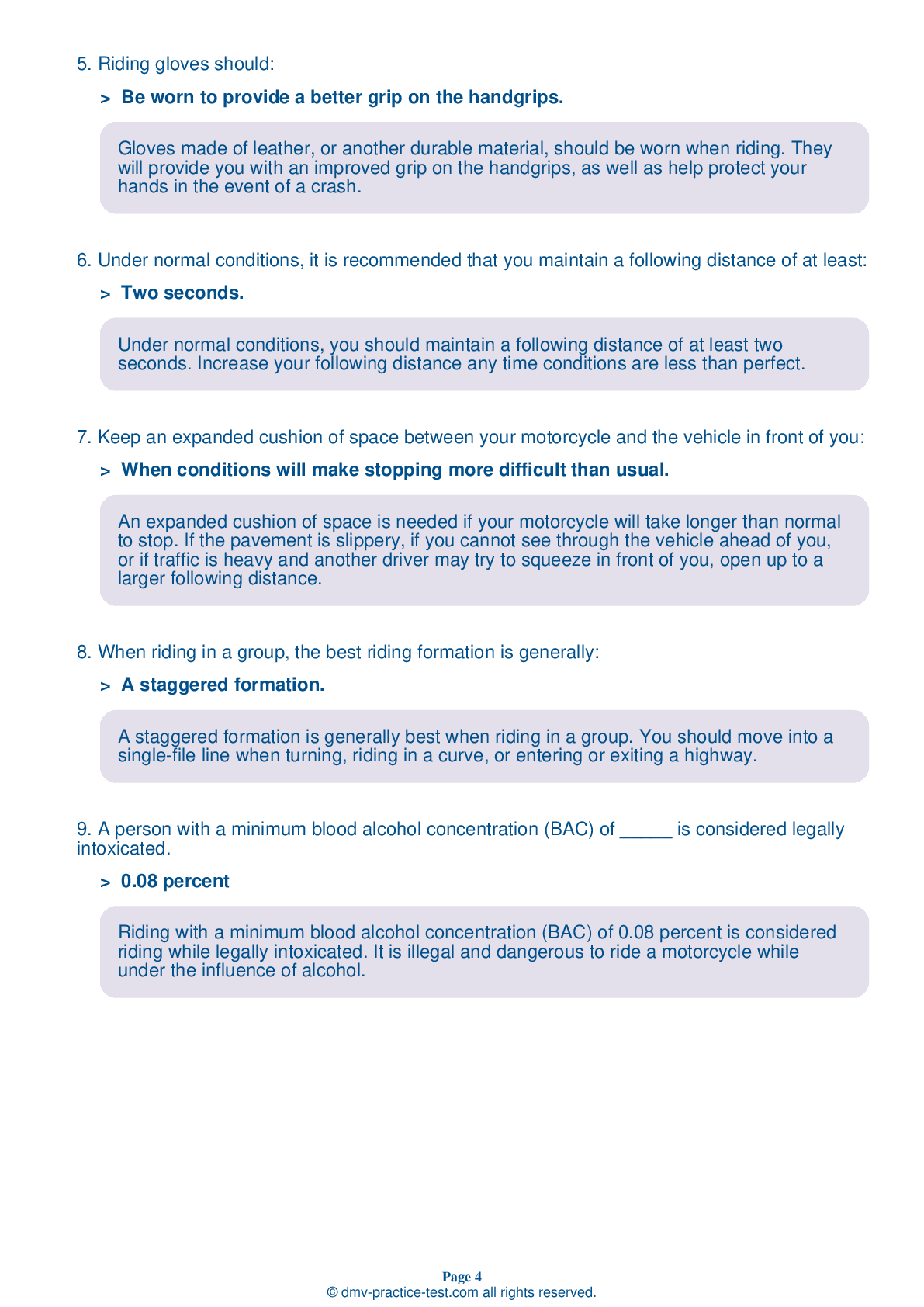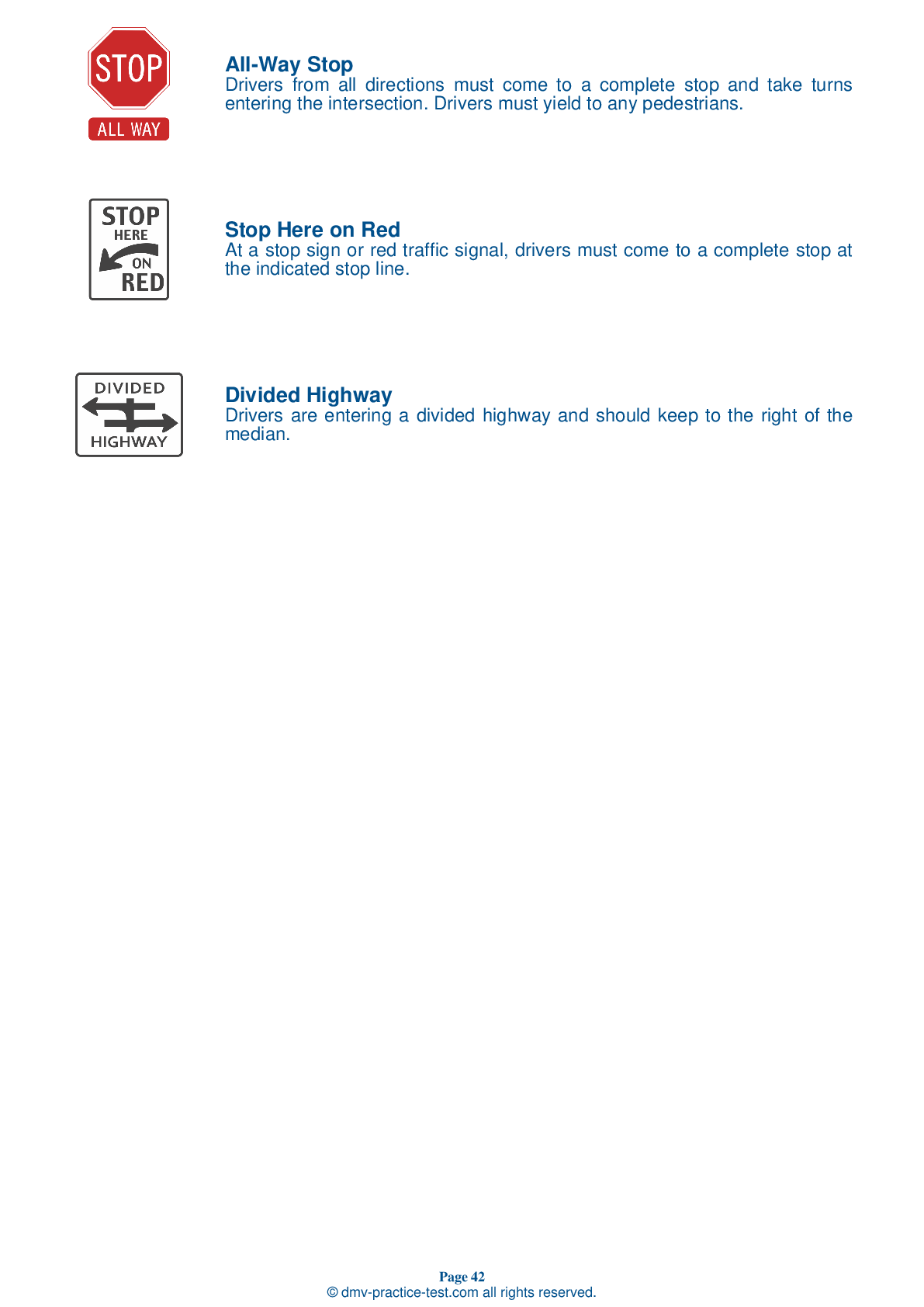Motorcycle Test | License MN 2025 | FREE Online Practice! #7 Page 2 of 5
Take this FREE motorcycle test (license in MN 2025) to check your knowledge of the road rules. To improve your results, download a motorcycle handbook online, study theory, and practice for free on our website. Still worried about how to get a motorcycle license in Minnesota in 2025? Check our website for more sample tests, train as much as possible, and boost your grades!
9 . A pasenger must:
Passengers may not ride on a motorcycle unless they can reach the footrests on each side of the motorcycle with both feet while seated. A passenger should only ride on a motorcycle that is properly equipped to carry a passenger.
10 . If you must brake and swerve to avoid a hazard, you should:
If you must brake and swerve to avoid a hazard, you should perform both actions separately. Brake then swerve, or swerve then brake. Do not do both at the same time.
11 . When riding three-wheeled motorcycles in a group, you should travel in:
Lane positioning when riding in groups is an important consideration. You will not be able to use a staggered formation, as you would when riding two-wheeled motorcycles. Ride single-file and always maintain a safe margin between vehicles.
12 . The faster you drink:
The faster you drink, the more alcohol will accumulate in your body. It is never safe to operate a motor vehicle after drinking alcohol in any amount.
13 . The shortest and safest stops are accomplished:
The shortest and safest stops are achieved by using both the front and rear brakes in a smooth and progressive manner, without skidding either tire.
14 . This sign means:
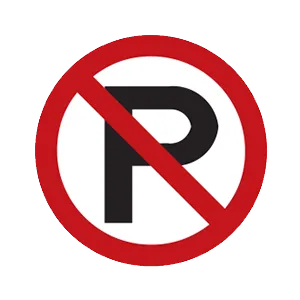
Regulation signs regulate traffic speed and movement, displaying rules which drivers must obey. This regulation sign indicates that parking is not permitted.
15 . A motorcyclist is well-protected if they are wearing:
For your protection while riding, it is best to wear a jacket and pants that cover your arms and legs completely. Boots or shoes should be tall and sturdy enough to cover and support your ankles. Footwear should have low heels that will not catch on the foot pegs or rough road surfaces. Gloves made of leather or another durable material will help protect your hands in the event of a crash while providing you with an improved grip on the controls.
16 . To be effective, an eye or face shield should be all of the following, except:
To be effective, eye protection and face shields must be free of scratches; be resistant to penetration; give a clear view to either side; fasten securely; permit air to pass through; and permit enough room for eyeglasses or sunglasses to be worn underneath.
See the exact questions that will be on the 2025 Minnesota DMV exam.
99.2% of people who use the cheat sheet pass the FIRST TIME
Jeneen was tired of paying $5/gallon. She got herself a scooter that required the motorcycle license. She studyed the motorcycle test cheat sheet and passed her test the next day!
Christopher tells us how he knew nothing prior to obtaining the motorcycle study guide, and he only got one question wrong because he clicked on the wrong answer by mistake.
